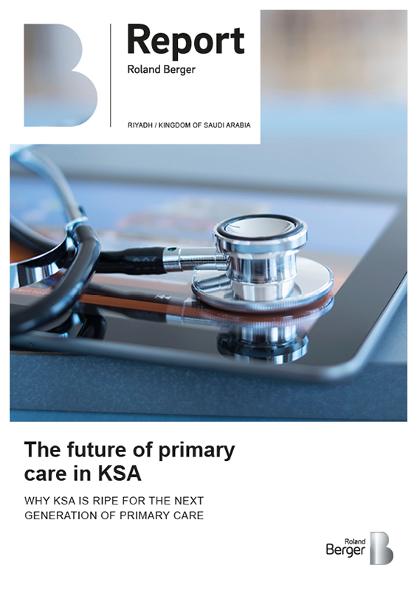The future of primary care in the Kingdom of Saudi Arabia
![{[downloads[language].preview]}](https://www.rolandberger.com/publications/publication_image/Roland_Berger_INS_791_Future_of_primary_care_in_KSA_DT_download_preview.jpg)
The future of primary care in the Kingdom of Saudi Arabia – Why the Kingdom of Saudi Arabia is ripe for the next generation primary care.



The Kingdom of Saudi Arabia (KSA) is facing numerous challenges to its healthcare system. The most pressing include a growing elderly population and high levels of chronic disease. These could prove costly: Between 2019 and 2030, per-capita healthcare expenditure is expected to rise 47 % from USD 1,261 to USD 1,858. In response, the government is now implementing initiatives to strengthen primary and preventive care. It aims to make patient flow management more efficient and accelerate innovation by opening up the market to private players.
Efficient, high-performing primary care must be both accessible and well integrated. Here, KSA still has work to do. Patients report difficulties in accessing primary care, particularly in rural areas. A recent ministerial committee review found that the number of primary healthcare physicians was 40 % less than required. What's more, the country's centralized healthcare set-up, paired with a suboptimal information system, results in poor coordination and integration between primary care and other health sectors.
However, changes are underway. Covid-19 has forced KSA to accelerate its digital agenda, particularly with virtual solutions like teleconsultations. The government is also empowering the private sector to accelerate the pace of innovation. One key solution could be the inclusion of primary care clinics within pharmacies and grocery or retail stores, an approach already enjoying success notably in the United States. It provides numerous benefits, including reduced waiting times, easy accessibility and lower costs.
This model is now beginning to take off in KSA with Nahdi Medical Company, the Kingdom's largest pharmacy chain. Elsewhere, a growing number of domestic and international private businesses are driving development of KSA's nascent HealthTech ecosystem, particularly in areas like diagnostics.
We see three strategic priorities to successfully developing Saudi Arabia's next generation of primary care infrastructure. Firstly, the government must find the right balance between driving market transformation and ensuring effective governance and supervision. Secondly, traditional healthcare providers must accelerate their transformation to keep up with market disruption. And lastly, the public and private sectors must test and develop the right models and partnerships to unlock KSA's full primary healthcare potential.

![{[downloads[language].preview]}](https://www.rolandberger.com/publications/publication_image/Roland_Berger_INS_791_Future_of_primary_care_in_KSA_DT_download_preview.jpg)
The future of primary care in the Kingdom of Saudi Arabia – Why the Kingdom of Saudi Arabia is ripe for the next generation primary care.